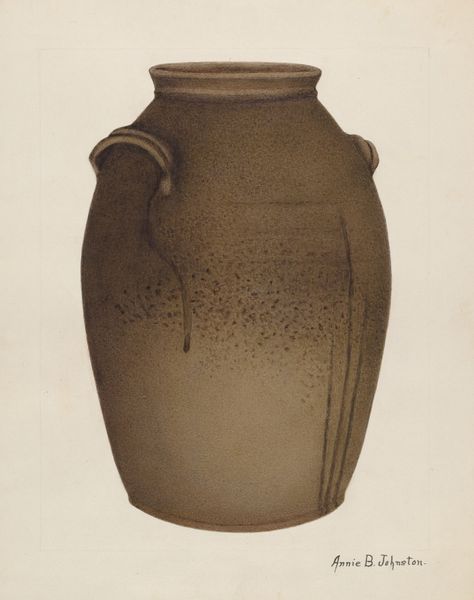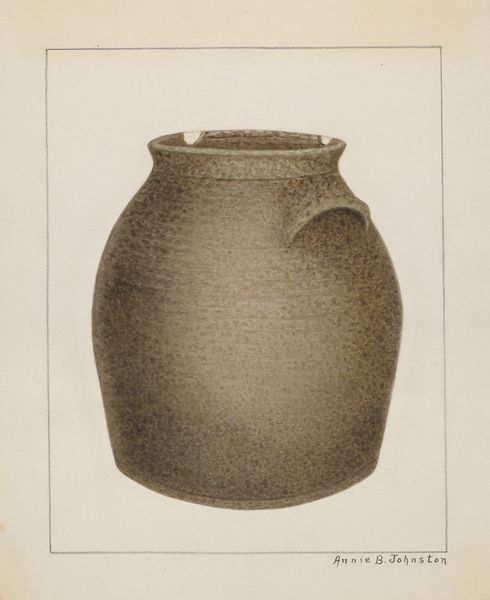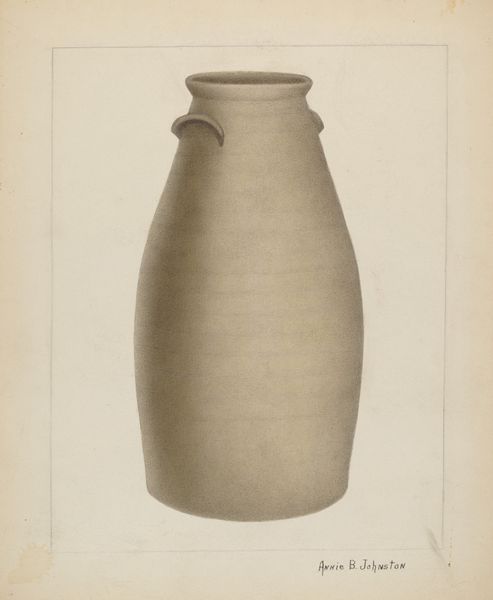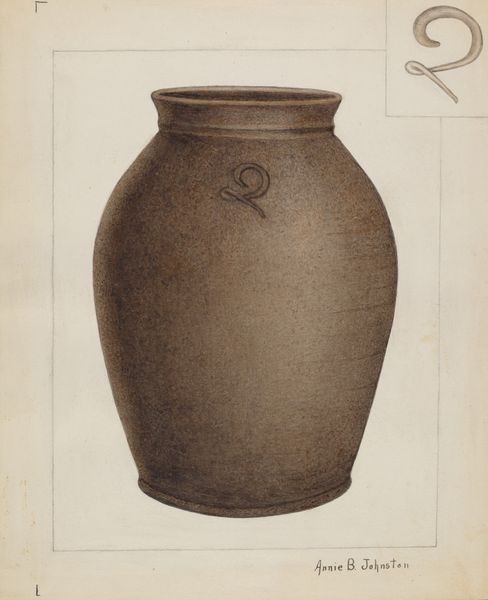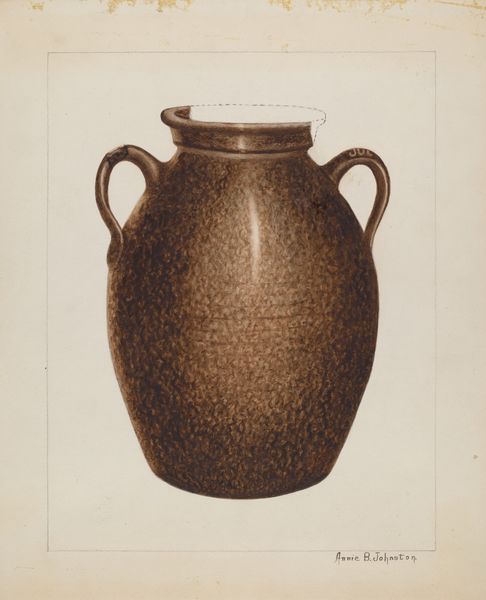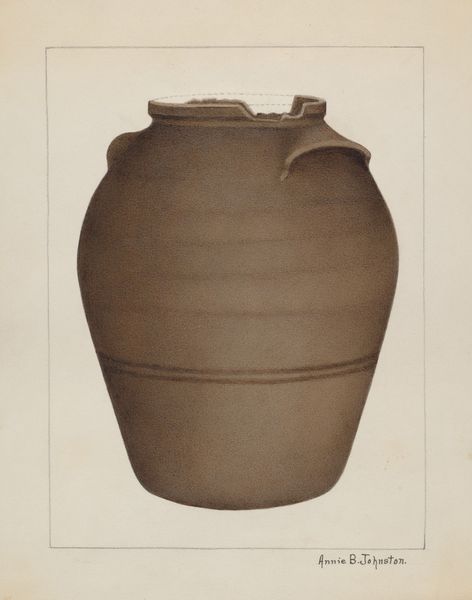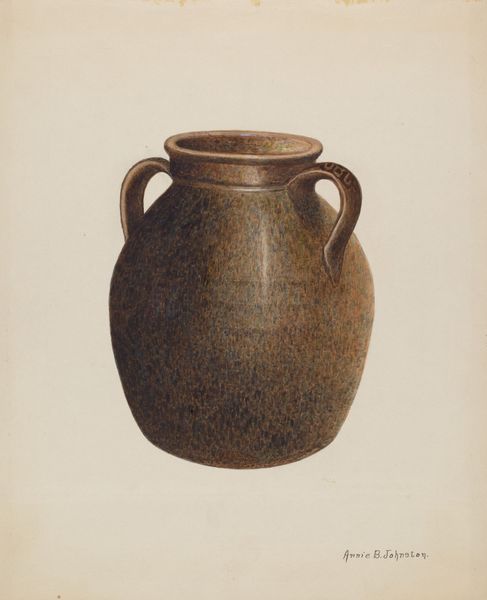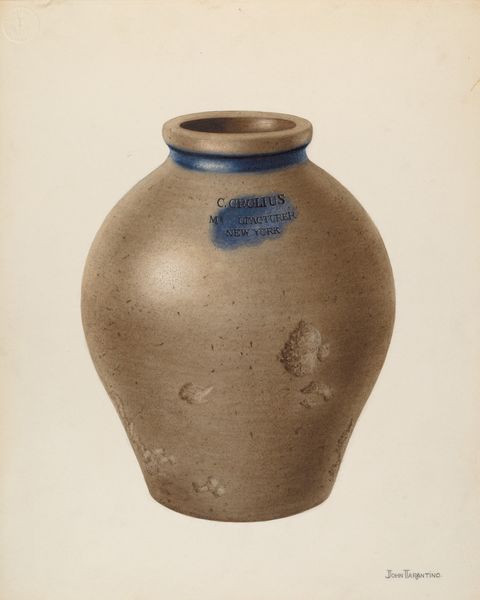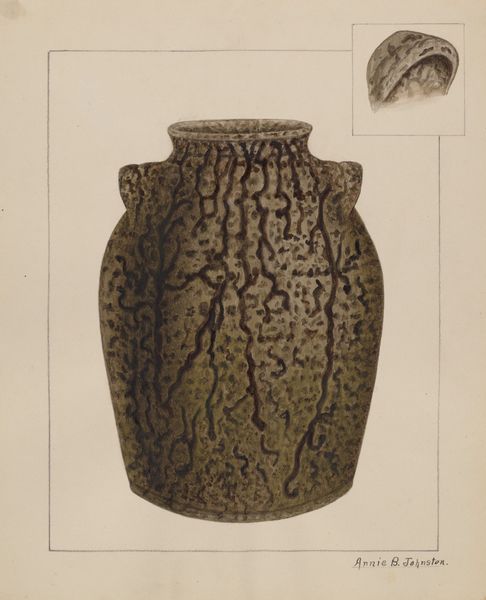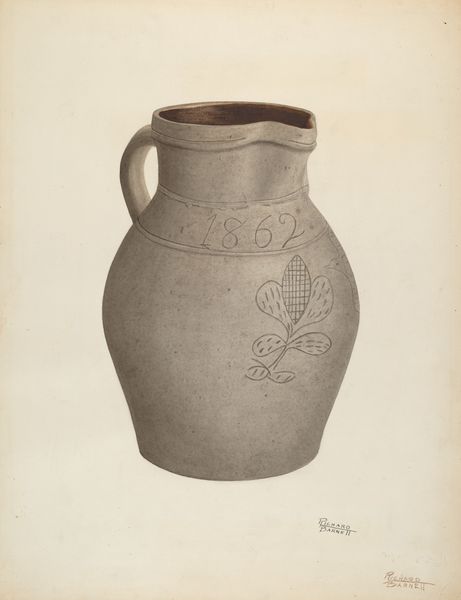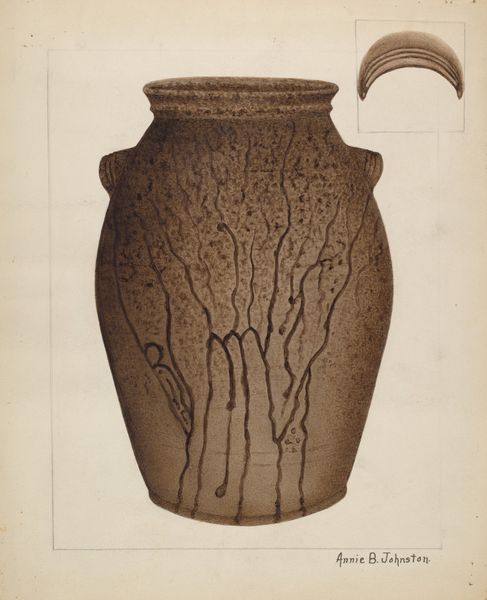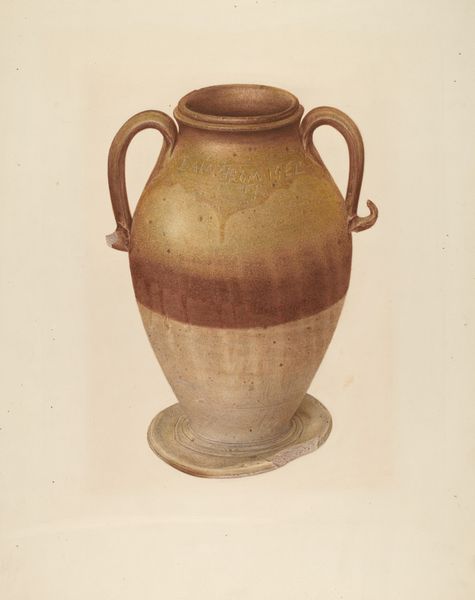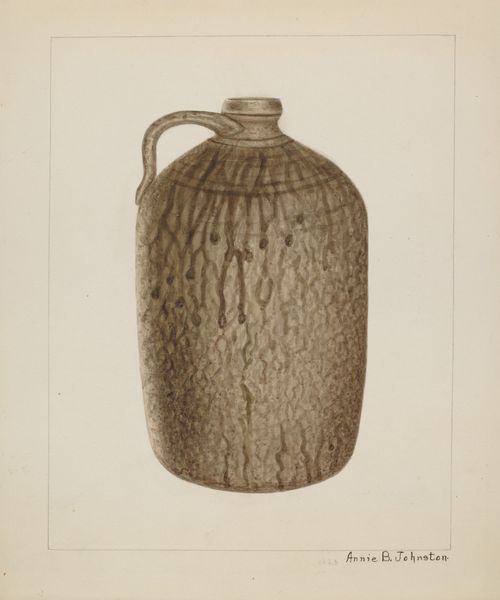
drawing
#
drawing
#
pencil drawing
#
watercolour illustration
#
watercolor
Dimensions: overall: 27.9 x 22.8 cm (11 x 9 in.) Original IAD Object: 14 1/2" High 9" Dia.
Copyright: National Gallery of Art: CC0 1.0
Editor: This is a watercolor illustration entitled "Stoneware Jar," created around 1937 by Annie B. Johnston. I’m struck by its simplicity, yet there’s something very evocative about this utilitarian object, the slightly mottled texture, the muted tones… What cultural narratives do you think are embedded in this image? Curator: That's a great observation! While seemingly simple, this jar resonates with complex historical layers, particularly regarding labor, gender and the domestic sphere. How does viewing it as part of a larger body of work by a woman artist working in the 1930s shift your perspective? Editor: I hadn't really considered that. Seeing it through that lens, I start thinking about the types of labor and skills devalued because they're deemed domestic or "feminine." It's not just a jar; it's a representation of a whole area of lived experience. Curator: Exactly! These types of utilitarian stoneware are objects that reflect and sustain lives. Also note that “Home Made Odom” is written on it – this further invites discussion on communal ties and resource sharing, possibly amidst scarcity. Could this image subtly challenge or subvert traditional hierarchies within art history? Editor: I think so. Elevating this humble object grants significance to the labor of the woman, perhaps even challenging traditional notions of subject matter considered worthy of representation. Curator: Precisely. Consider also, the context of the 1930's America during The Great Depression, or maybe even the impact of consumerism and the rejection of homemade goods. Annie B. Johnston’s choice to document it could be a quiet, powerful statement. Editor: I see it differently now. This unassuming jar is actually full of layers of meaning! It invites us to consider gender, labor, and cultural values during a transformative time in American history. Thank you! Curator: And thank you. Looking at art through such intersectional lenses truly enriches our understanding of both the object and the artist.
Comments
No comments
Be the first to comment and join the conversation on the ultimate creative platform.
